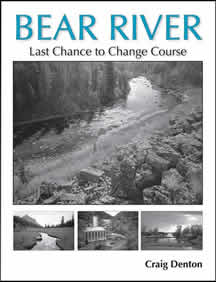
|
|
About Continuum Advertising Advisory Committee Archives Contact Us Continuum Home Faculty/Staff Subscribe related websites Alumni Association Marketing & Communications University of Utah Home |

Bookshelf (cont'd)Special to Continuum online
|
Excerpt from “From Alpine to Desert” in Bear River: Last Chance to Change Course”: Inside the periphery of the desert-shrub, mudflat community are the Bear River Migratory Bird Refuge wetlands. They are an oasis in the harsh desert of the Basin and Range geography of dry playa lakebeds for more than 26 species of birds that use the refuge sometime during the year. Part of the western Hemisphere shorebird reserve Network, these wetlands are visited by approximately thirty-three species of shorebirds. They are a portion of the two to five million individual birds that rely on the Great Salt Lake annually. Approximately 30 percent of migratory waterfowl in the PacificFlyway use the Bear river Migratory bird Refuge as one of their refueling and resting stops, as reported in Box Elder county’s Wetlands Management Plan. The Army Corps of Engineers says that any one of three characteristics defines a wetland. It must have a hydrology where it is inundated temporarily or permanently some portion of the year. It has hydrophytic vegetation, meaning it supports water-loving plants like cattails, rushes, or sedges. Lastly, it contains undrained, hydric (wet) soil that is anaerobic (lacking oxygen) in its upper stratum. Such wet areas are biologically diverse ecosystems. Most species of birds utilize wetlands, with approximately one-third of all North American types relying on this habitat for their existence. In the United states, 28 percent of endangered animals spend part of their life cycles in wetlands |
